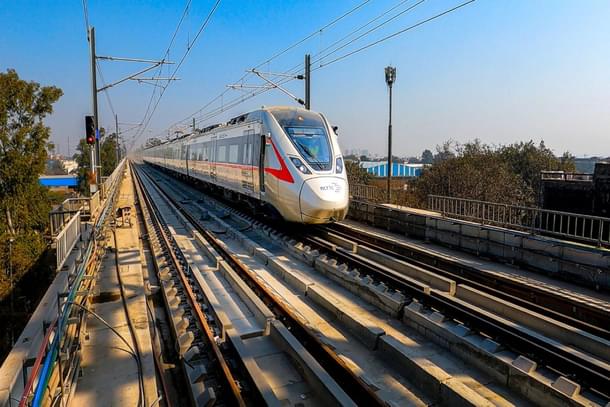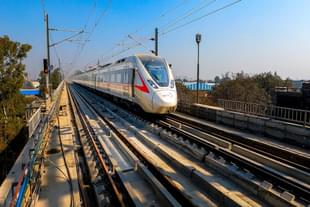Infrastructure
RRTS Derailment: NCRTC Investigation Reveals Staff Negligence As Root Cause
V Bhagya Subhashini
Mar 28, 2024, 06:41 PM | Updated 06:41 PM IST
Save & read from anywhere!
Bookmark stories for easy access on any device or the Swarajya app.


Following a recent derailment incident at the Duhai Depot in Uttar Pradesh, the National Capital Region Transport Corporation (NCRTC) has conducted an investigation into the regional rapid rail project. It identified operational staff lapses as the primary cause.
NCRTC revealed that a high-level inquiry committee composed of technical experts had made several observations regarding the incident. The committee attributed the derailment to operational negligence by the staff during the movement of the train within the maintenance depot.
India's first regional rail service, called RRTS, offers a first-of-its-kind rail-based commuter service for regional transit in the National Capital Region.
A 17-km long priority section of this corridor, between Sahibabad and Duhai Depot, was commissioned for public use. Sahibabad, Ghaziabad, Guldhar, Duhai and Duhai Depot are its five stations. These stations witnessed a daily average ridership ranging from 2,500 to 3,000 passengers.
Alstom secured a contract worth Rs 106 million from NCRTC in 2020 for the design, supply, and installation of signalling and train control systems on the RRTS corridor.
Meanwhile, Deutsche Bahn subsidiary International Operations (DB IO) was awarded a contract for the operation and maintenance of RRTS over 12 years in 2022. It oversees rail operations and maintenance, with Alstom providing the rolling stock and signalling system.
NCRTC outlined corrective actions taken, stating that the committee recommended disciplinary measures against the implicated staff. Additionally, staff members are undergoing rigorous refresher courses to enhance their knowledge of standard operating procedures. Following the incident, speed restrictions were briefly enforced on the corridor, reports Economic Times.
The RRTS falls under the administrative purview of the Ministry of Housing and Urban Affairs. Popularly known as Namo Bharat, the rapid rail operate at a maximum speed of 160 kmph, average speed of 90 kmph with all designated stops, making them semi-high speed train sets.
V Bhagya Subhashini is a staff writer at Swarajya. She tracks infrastructure developments.




